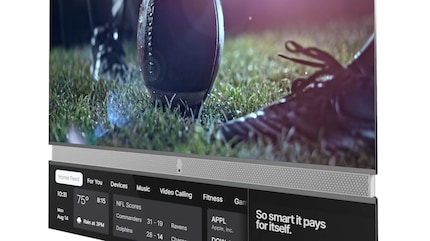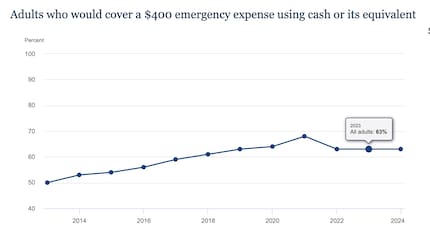
Background information
Your smartphone knows where you’ve been – and that’s a problem
by Oliver Herren

If you pay nothing, we’ll torment you with ads. We all know this is how it works but Telly takes it too far. The business model sounds something from a dystopian film.
There are too many ads in this world. According to estimates, each and every one of us is exposed to an average of 5,000 to 13,000 advertising messages per day. Our brain filters out most of these straight away – but some always remain in our subconscious. Advertising is a form of brainwashing. And we’ve all had enough of it now.
What can you do if you want to show ads but know no one wants to see or hear them? One strategy is to force them on people. Want to look out the window while you’re travelling on a tram as a tourist? Ha, bad luck. The window is covered up with an ad for a tourism campaign. Better look at your mobile instead, why don’t you watch a YouTube video? You can only see the video after you’ve watched two ads. Got an ad blocker, clever clogs? Well we’ve got an ad blocker blocker. Got an ad blocker blocker blocker? Not an issue for us, here’s our ad blocker blocker blocker blocker.

As a TV consumer, you’ll have to watch ads one way or another, whether as a brief interruption to a show, sponsorship during sports broadcasts or, as of recently, even during replays. Nowadays being bombarded with ads against your will is nothing out of the ordinary. But Telly’s business model is crass, even by today’s standards.
This is how Telly works: you get given a free TV but, in exchange, will be forced to watch constant ads on a second screen. This sounds like a plot from a dystopian novel but has been the reality in the USA for a little over two years now. This is how long Telly has been around for.
Emma Roth, journalist at The Verge, recently took at closer look at this. Ironically, while I’ve been reading her article, The Verge has shown me six animated ads and a video that started playing automatically. This is although I’m a paid subscriber to The Verge and I’ve logged in.
Even Telly’s terms of service are unusual. They require you to keep the TV permanently connected to the internet and to use it as your main TV. The TV has a built-in microphone and camera which makes it possible to check whether anyone is actually watching the TV when it’s on. The terms of use prohibit any attempts to circumvent or block the ads. If you breach these terms, the service can be deactivated and you’ll have to return the TV. If you don’t do this, your credit card will be charged 1,000 US dollars.
Telly’s promotional video kicks off with: «Over time, things change. And usually, for the better. So what happened to the TV? We keep evolving.»
Smart TVs are dumb, the video continues. But not Telly. The TV has a built-in soundbar and a second screen that sits just below it. This second screen shows information like news and makes it possible to use smart TV apps. This might sound like a good idea at first.

But it’s not: the main function of the second screen is to display constant ads. And because it’s also there for things you actually need, you can’t cover it up. Not to mention the fact that doing so is forbidden by the terms of service. The second screen remains on at all times, even if the TV is switched off.
Why would anyone do this to themselves? You can get a 55-inch TV for less than 500 francs, and a soundbar doesn’t cost the earth. But for many, even this is out of reach. In the USA, at least one third of all adults wouldn’t be able to afford an unexpected expense of more than 400 dollars.

This explains the demand for Telly. But why is it being given away for free? Only a minority of Telly’s customers presumably have money for the things they’re forced to see in Telly’s continuous ads. Why is the advertising targeting precisely those people who have little to no disposable income?
My guess? These ads aren’t broadcast with the main aim of boosting product sales – they serve a different purpose. In particular, they’re for researching user behaviour, to put it bluntly, monitoring it. Even people with no purchasing power make suitable subjects for this.
Telly’s privacy policy confirms this. As much data is collected as possible, and it’s passed on to advertisers and other partners without any discernible restrictions. The business partners presumably broadcast the ads to find out how they can be made more efficient. It’s a market research experiment with less well-off people as the guinea pigs.
In future, real luxury won’t be an 85-inch OLED, but the privilege to buy your way out of being forced to watch ads.
My interest in IT and writing landed me in tech journalism early on (2000). I want to know how we can use technology without being used. Outside of the office, I’m a keen musician who makes up for lacking talent with excessive enthusiasm.
Interesting facts about products, behind-the-scenes looks at manufacturers and deep-dives on interesting people.
Show all
Background information
by Oliver Herren

Background information
by Anna Sandner

Background information
by Patrick Vogt